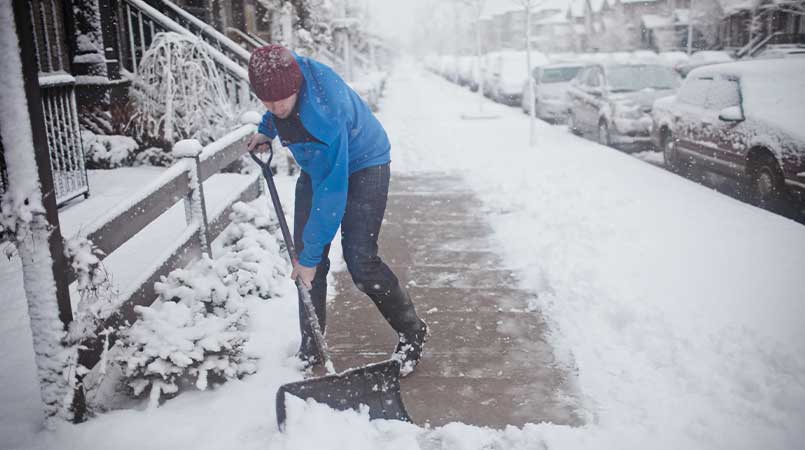Now that many of us are in the chilling depths of winter, it’s important to remember how working in cold environments impacts workers and employees, especially those of older age.
Hypothermia is a medical emergency that occurs when the body’s temperature reaches below 95° F (35° C), caused by prolonged exposure to very cold temperatures. When this happens, the body uses its stored heat to keep organs functioning and continues losing heat faster than the body can produce it.
The inability to maintain normal body temperature comes at a cost. Body temperature that is too low affects the brain, making the victim unable to think clearly or move well. This makes hypothermia especially dangerous, because a person may not know that it’s happening to them.
Working in cold environment conditions affects every worker to some degree, but there are certain populations that are at higher risk to cold-related injuries or conditions: those with a predisposed medical condition susceptible to cold injury, and those of the aging population.
In this blog, we’ll share two factors that put the aging workforce at risk during winter so that you can be aware and protect your workers.
Cardiovascular Complications of the Cold
Studies have shown that cardiovascular issues arise more during the winter months due to the heart needing to work harder to generate body heat.
As the body works in overdrive to generate body heat, the blood vessels begin to constrict, making it harder for the blood to get to the heart. Blood pressure becomes elevated, increasing the risk of a heart attack or stroke. In cold environments, workers may find tasks such as lifting more difficult as they’re not only trying to produce energy to complete the task, but their body is trying to produce enough energy to regulate its temperature.
This fluctuation of expenditure energy (total energy cost of maintaining constant conditions in the body plus the energy cost of physical activities) can be harmful to the aging workforce, as some may have conditions currently impacting their heart health.
Musculoskeletal Disorders in the Cold
During the body’s exposure to cold elements, blood flow is redirected to the vital organs, which is why cold hands are usually one of the first signs indicating that the body is cold. This redirected path of blood flow can have negative impacts on the body, as adequate blood supply is essential for proper soft tissue functioning. As the blood leaves the hands, workers may find it more difficult to grip things or handle objects, which may result in the development of carpal tunnel, strains/sprains, or tendonitis.
Muscle mass already decreases between 3% to 8% after the age of thirty, with the additional factor of cold temperature, members of the aging workforce are especially at risk of sustaining a musculoskeletal disorder increase. In addition to challenges with handling items, the reduction of blood flow can make muscles stiff; therefore, reducing the flexibility/range of motion and possibility leading to a muscular strain.
Although a person’s response to working in cold temperatures will vary from person to person no matter their age, prolonged exposure to cold conditions can be devasting for anyone. Actions to protect the worker from the hazardous cold environment are essential.
Workplace Considerations for the Cold
Here are some important aspects that can keep employees and workers of all ages healthy and safe in wintery conditions.
- Increase/Extend breaks to allow body to warm up (in a warm environment) to ensure that the body is regulating its temperature properly
- Monitor temperature in work area to ensure that employees are working within safe temperatures
- Limit time of cold temperature exposure
- Provide warm beverages in break rooms
- Ensure proper cold environment PPE is provided
- Provide company-approved heating devices for each working environment
- Shield work areas from drafts
- Winterize material handling equipment (i.e. check battery and hydraulic performances, store equipment in warm places or cover them with a tarp and increase routine maintenance checks). Malfunctioning equipment may decrease productivity and increase the risk of injuries.
As we face the rest of the winter ahead, keep workers of all ages healthy and warm by ensuring that considerations for the cold are included in employee work environments.
Written by Courtney Upshaw, VelocityEHS Ergonomics Consultant
References
-Canadian Centre for Occupational Health and Safety; www.ccohs.ca
-Centers for Disease Control and Prevention; www.cdc.gov
-Occupational Safety and Health Administration; www.osha.gov
